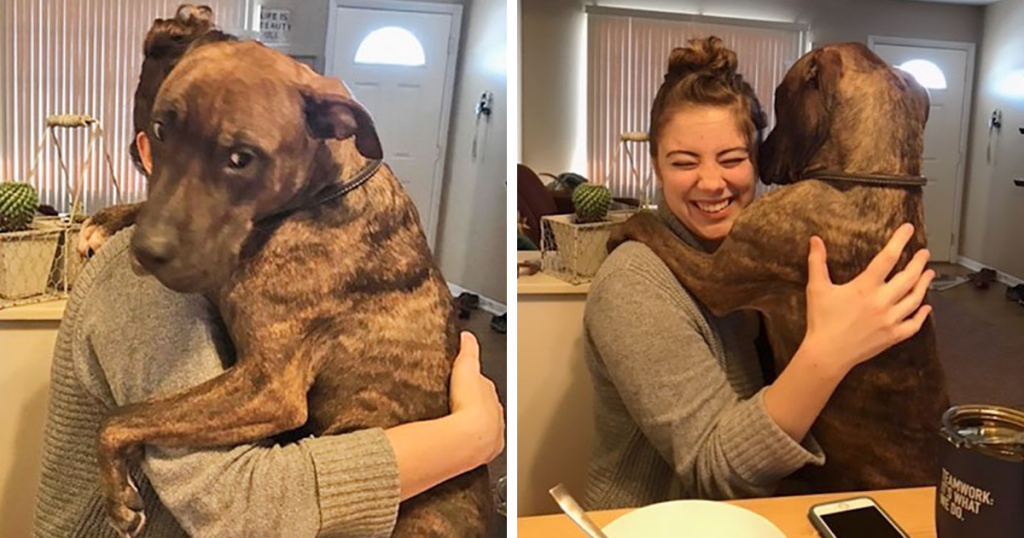
Meet Kylo, the rescue doggie who feels so grateful for being saved from a shelter, he just wants to snuggle and hug his human mom the moment she steps into their house. “As soon as I sit down to take off my shoes he climbs into my lap to be held,” Meghan Sweers, Kylo’s new owner, told The Dodo. “If I don’t sit down for our cuddle time he follows me around with the saddest most pathetic look on his face until I give in and hold him.”
But it wasn’t always like that – when he was just 10 months old, Kylo was surrendered to the shelter, and, once pulled away from it, spent ages at a foster home with no one showing interest in the goofy dog – until Sweers and her husband showed up.
Kylo’s first night at their home went absolutely perfect. “He crawled into my lap, tucked his head under my chin, and started snoring like a chainsaw,” Sweers said. “From that moment my husband and I knew he was staying with us!”
Kylo the hugging dog is so grateful for finding a loving forever home, he gives love to everyone he meets now. “He wins people over a bit forcibly… by climbing into their lap and falling asleep.”
Meet Kylo, the rescue who can’t stop hugging his owner for saving him
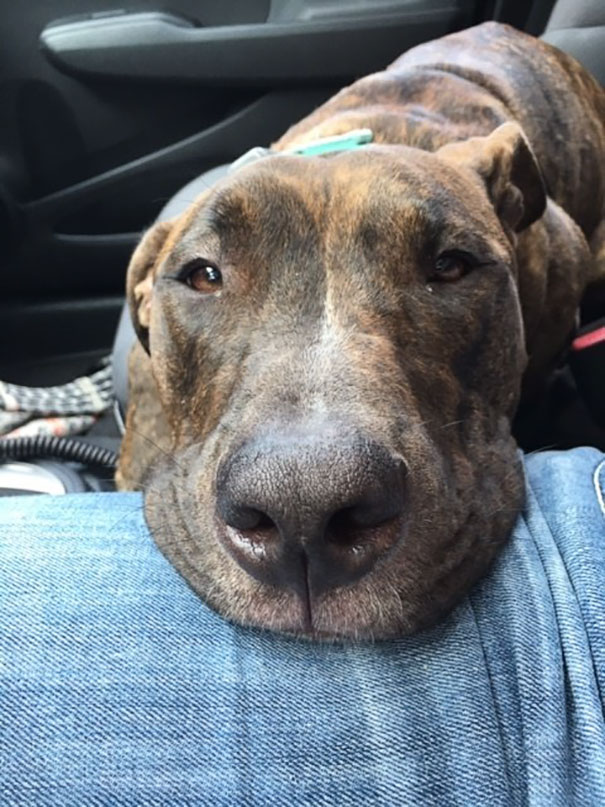
Every day when she enters the house, Kylo demands some snuggles and hugs
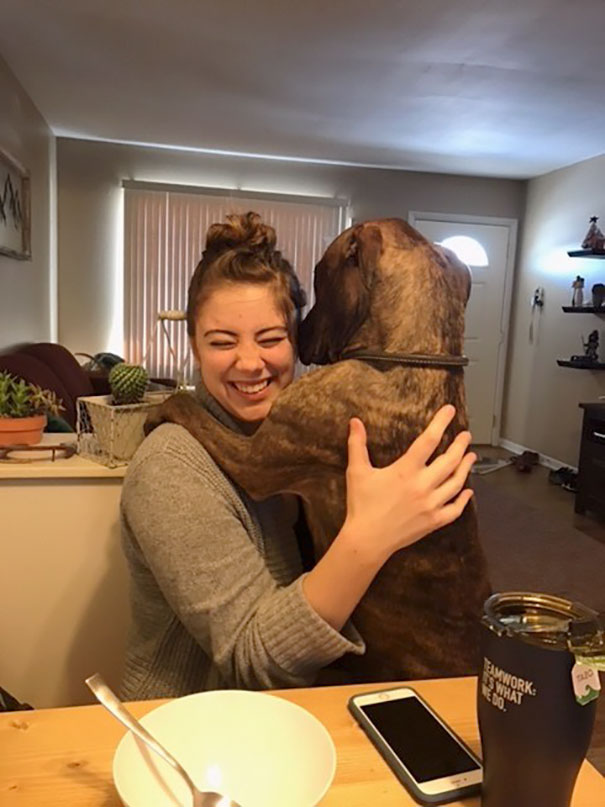
“As soon as I sit down to take off my shoes he climbs into my lap to be held”

“If I don’t sit down for our cuddle time he follows me around…”

Meghan Sweers rescued the doggie from a shelter a year ago, when he was 10 months old
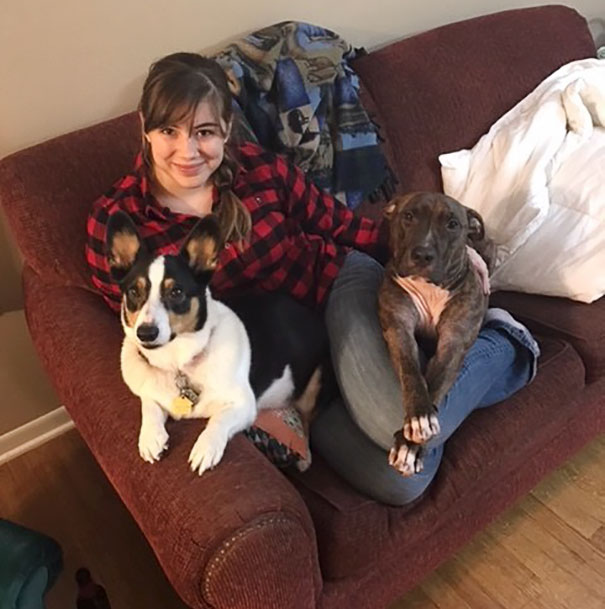
Kylo the hugging pibble has been particularly attached to her ever since

“He wins people over a bit forcibly… by climbing into their lap and falling asleep”
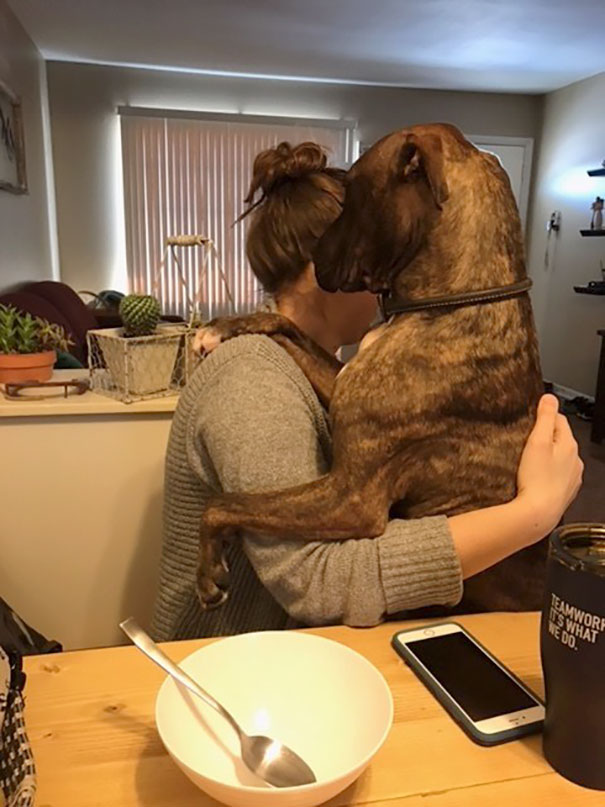
100-year-old woman finds ‘perfect match’ in 11-year-old senior chihuahua
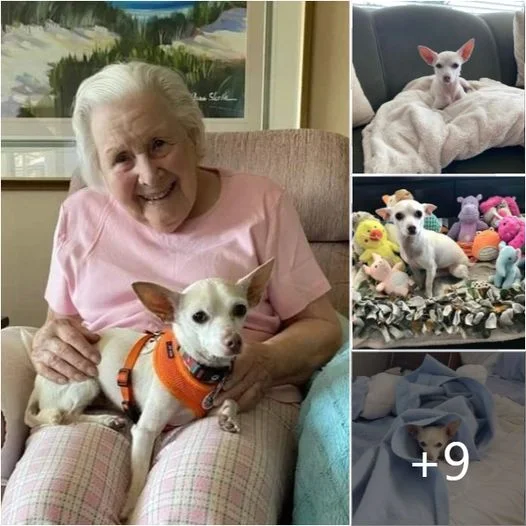
Life has a beautiful way of surprising us, and sometimes, those surprises come in the form of a furry, four-legged companion. Meet Johanna Carrington, a remarkable centenarian who, despite a life filled with challenges, has always carried a deep love for dogs.
Johanna’s journey began in war-torn Germany, where owning a dog was a distant dream. She and her late husband once shared their home with eight Pekingese dogs, a testament to their shared love for these loyal creatures. However, when her beloved dog Rocky passed away, Johanna was left feeling alone in her house, yearning for a furry friend.

One might think that, at the age of 100, adopting another dog could be a challenge. Johanna was uncertain if the shelter would allow someone of her age to adopt. Fortunately, a caring neighbor who supports Muttville Senior Dog Rescue in San Francisco suggested that this organization might have the perfect solution.
Muttville Senior Dog Rescue recognized that Johanna Carrington and a senior dog would be an ideal match. After careful consideration, Johanna adopted Gnocchi, a charming 11-year-old Chihuahua, whom she lovingly renamed Gucci.
Gucci’s life had a rocky start; he was rescued from a hoarding situation where his previous owner had 22 dogs. Being the only pampered pooch in his new home brought him immense joy. Johanna’s caregiver, Eddie Martinez, and her daughter, Debbie Carrington, made a heartfelt commitment to ensure that Gucci’s golden years would be filled with love and care.

The moment Gucci entered his new home, he seemed to recognize that he belonged there. Johanna recalled the heartwarming first encounter, saying, “He approached the home as though he’d been here before. It was incredible. When he spotted me seated in my chair, he leapt up and perched on my lap. He made himself extremely at ease. Right away, he was just our kid.”
Now, Gucci enjoys a life fit for a pampered pup. He has “oodles and oodles” of toys to play fetch with, daily back massages while watching TV with his new mom, and even the privilege of burrowing under the covers in bed for extra comfort.
Debbie Carrington, Johanna’s daughter, shared how Gucci’s arrival transformed their home, saying, “It was sort of sad here after she lost her other dog. It was silent and melancholy until Gucci came in and brought excitement into the house. Laughing at him running around and doing silly things, and then him resting on her lap with her when she’s in her chair or bed, it’s just making her very happy.”
The heartwarming bond between Johanna and Gucci is a testament to the joy and companionship that animals bring into our lives, regardless of age. In fact, scientific research supports the positive impact of pet ownership on emotional and social well-being, particularly in older individuals.

As Johanna approaches her 101st birthday in December, she and Gucci plan to celebrate this special milestone together. For Johanna, dogs have played a significant role in her long and healthy life, proving that the love between a human and their furry friend knows no age limits.
In a world that often seems fast-paced and hectic, the story of Johanna and Gucci reminds us of the simple yet profound happiness that animals can bring into our homes and hearts.
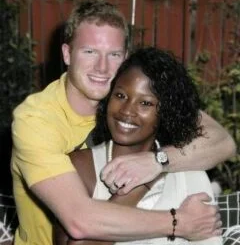
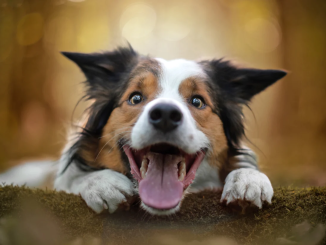

Leave a Reply